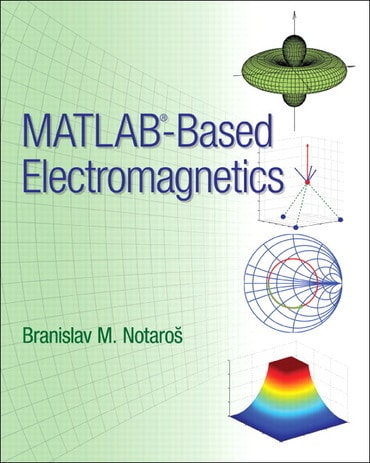
MATLAB-Based Electromagnetics, 1st edition
Published by Pearson (May 9, 2013) © 2014
- Branislav Notaros
Price Reduced From: $99.99
Can be used to either complement available electromagnetics text, or as an independent resource. Designed primarily for undergraduate electromagnetics, but can also be used in follow-up courses on antennas, propagation, microwaves, advanced electromagnetic theory, computational electromagnetics, electrical machines, signal integrity, etc.
MATLAB-Based Electromagentics provides engineering and physics students and other users with an operational knowledge and firm grasp of electromagnetic fundamentals aimed toward practical engineering applications, by teaching them “hands on” electromagnetics through a unique and comprehensive collection of MATLAB computer exercises and projects. Essentially, the book unifies two themes: it presents and explains electromagnetics using MATLAB on one side, and develops and discusses MATLAB for electromagnetics on the other.
MATLAB codes described (and listed) in TUTORIALS or proposed in other exercises provide prolonged benefits of learning. By running codes; generating results, figures, and diagrams; playing movies and animations; and solving a large variety of problems in MATLAB, in class, with peers in study groups, or individually, students gain a deep understanding of electromagnetics.
Need help? Get in touch
